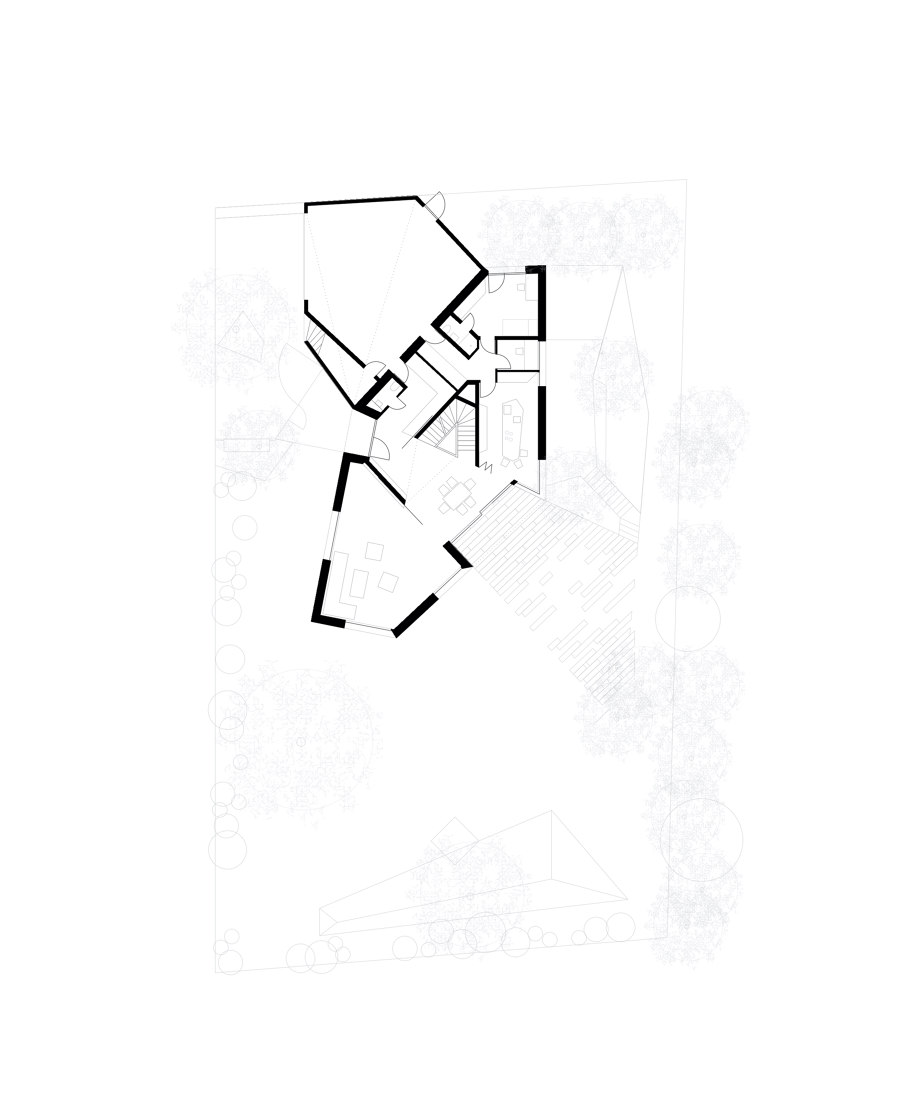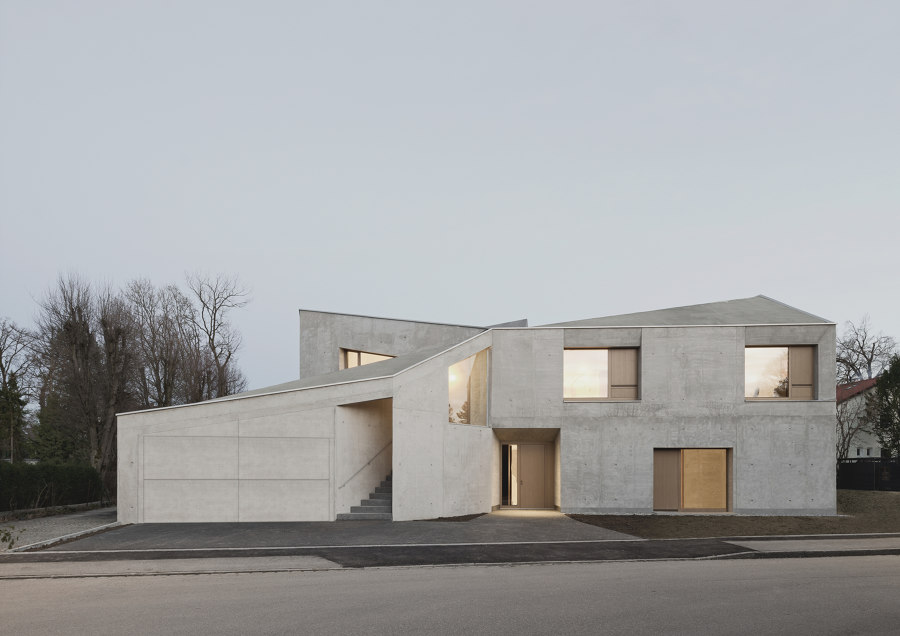
Photographer: Brigida Gonzalez
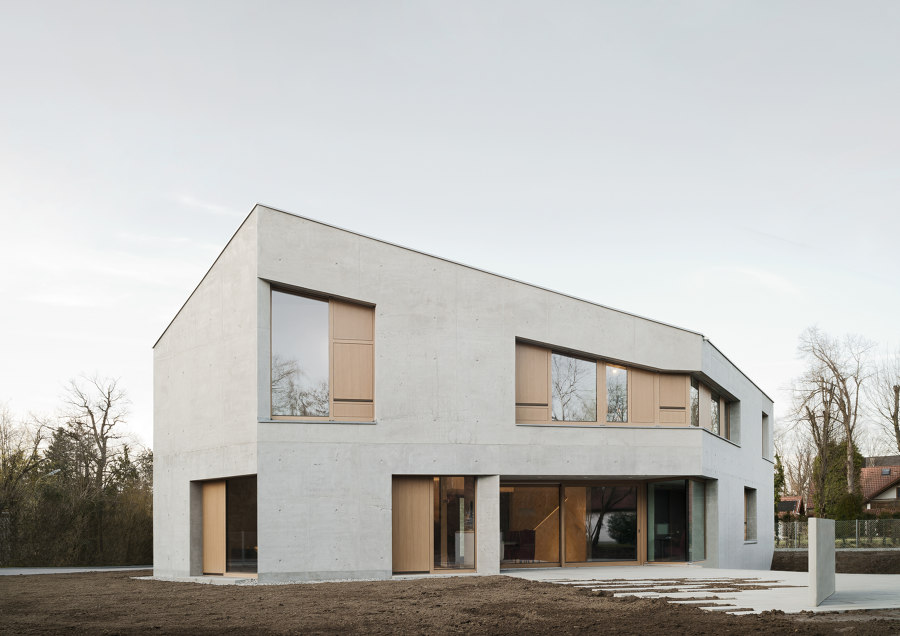
Photographer: Brigida González
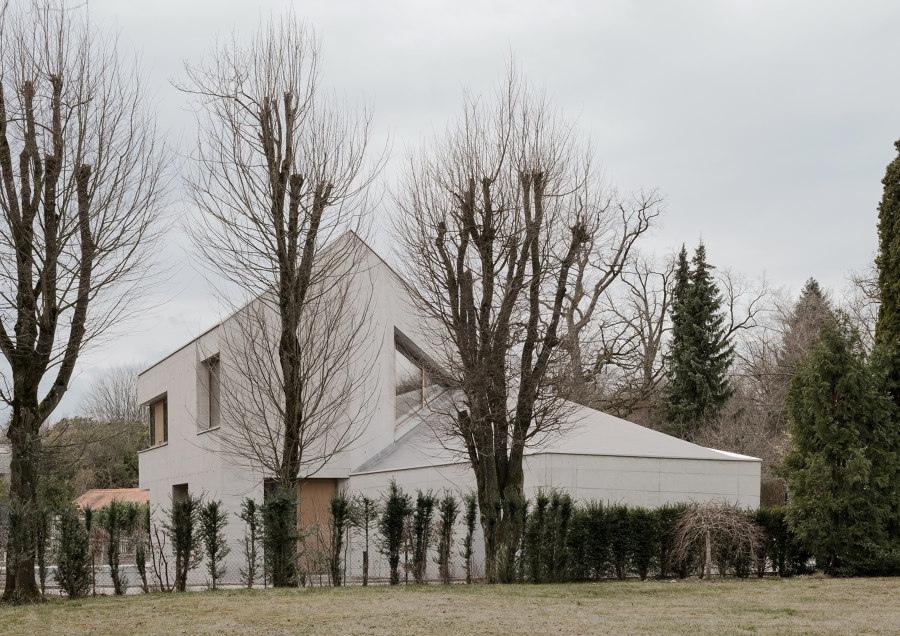
Photographer: Brigida González
House L, a single-family house containing an office wing and an apartment for an au pair, is sculpted as a monolith of massive concrete. It is as it appears to be: inside and outside concrete, without further insulation or cladding.
The crystalline form takes its cues from the surrounding buildings: compact single houses from the 1930s with hipped roofs standing at the corner of large gardens. Here, the six-sided object is angled to leave space on the northwest for the garage and to allow for a spacious garden to the south.
The plan is developed around a lozenge-shaped stairwell, which is the loadbearing core and integrates the central servicing shaft. The rooms are arranged around this central element, each opening out onto different outside spaces.
On the ground floor, the kitchen abuts onto the living/dining areas and opens up towards a terrace on the eastern side. Behind the kitchen area lies a small apartment for an au pair, with its own entrance and small private garden space in the northeast. The ancillary spaces such as storage and cloakroom are interconnected with the au pair room and the kitchen while opening directly onto the garage.
The upper level is organized with the children's bedrooms, the master bedroom and the guest room on one side, and office space on the other. The office has its principal entrance from a separate stair leading up from the main driveway but can be also entered from inside the house. The southernmost room can be added flexibly either to the office ensemble or used as a children’s room in the private house.
The light well of the V-shaped staircase tunnels down to the basement, where a swimming pool, steam bath, sauna, and fitness room open onto a sunken garden on the east side.
The ground floor plan has a polygonal but compact form that shapes the interior rooms, the garden areas, and the folding roof.
The unity of form is reflected in the unity of material. The thick self-insulating walls of infra light concrete are smooth with a veined surface while the roof’s underside is finished with a shuttering of rough planking, underscoring the directions of the various surfaces. The diagonal shuttering is carried through onto the cream-white polygonal tiling on the entrance area floor. These soft surfaces are supplemented with neutral tones of the cream-white plaster, the grey stone and carpet, and the natural tones of oak and smoked oak of the furnishing.
The upper surface is protected against the elements with a sealant, after a closer examination showed that the naked concrete itself, as originally envisaged, would not be sufficiently durable. The surface is clad with liquid polymer waterproofing, sprinkled with fire-dried quartz sand of mottled colours which mimic the infra light concrete which itself is covered with a scattering of dark pores. The base of the wall is protected with a mineral cement slurry in the colour of the concrete.
Design team:
Pool Leber Architekten
Structural Engineer: Christian Eisenhauer
Electrical Engineers: EPB Elektro Planung
Building Physics Adviser: Hansen Ingenieure
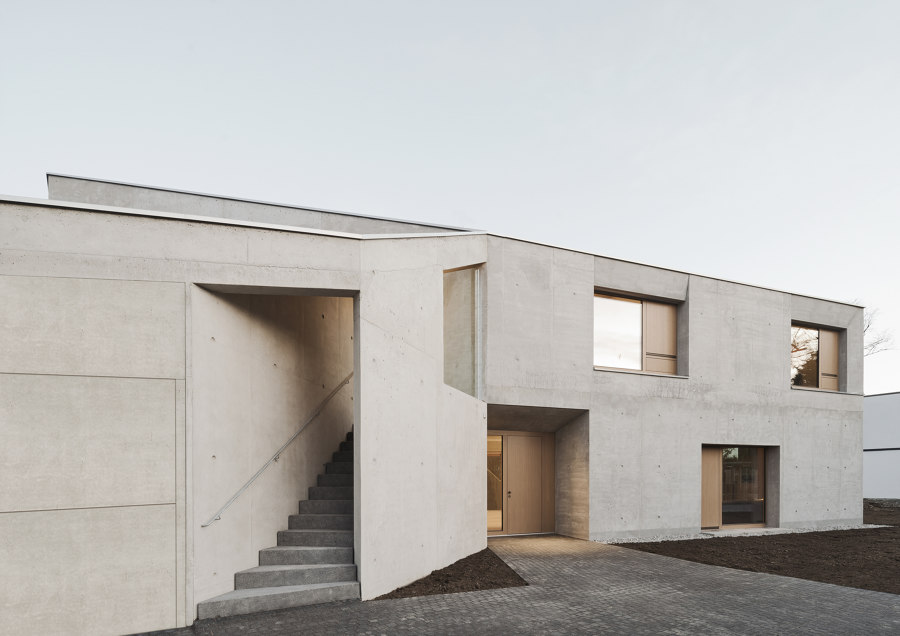
Photographer: Brigida González
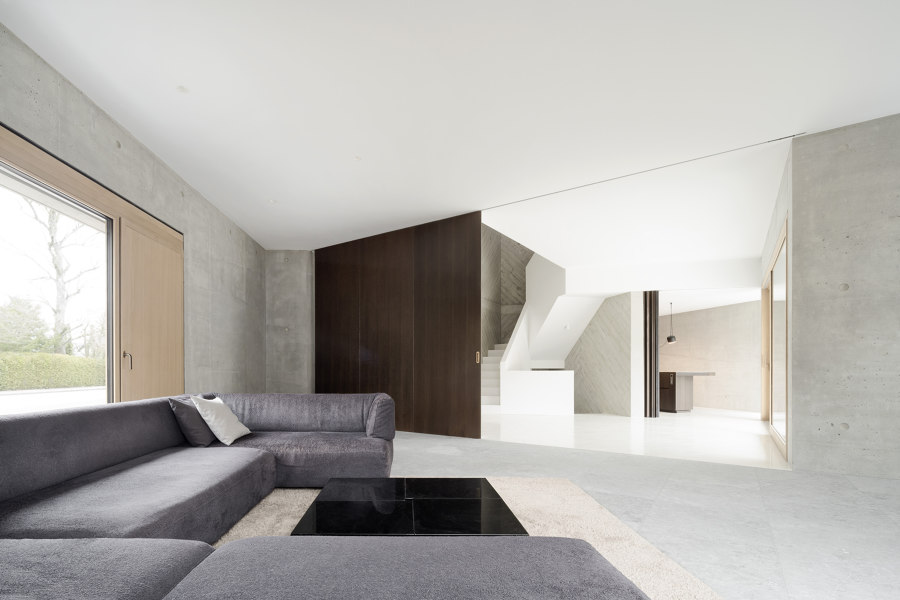
Photographer: Brigida González
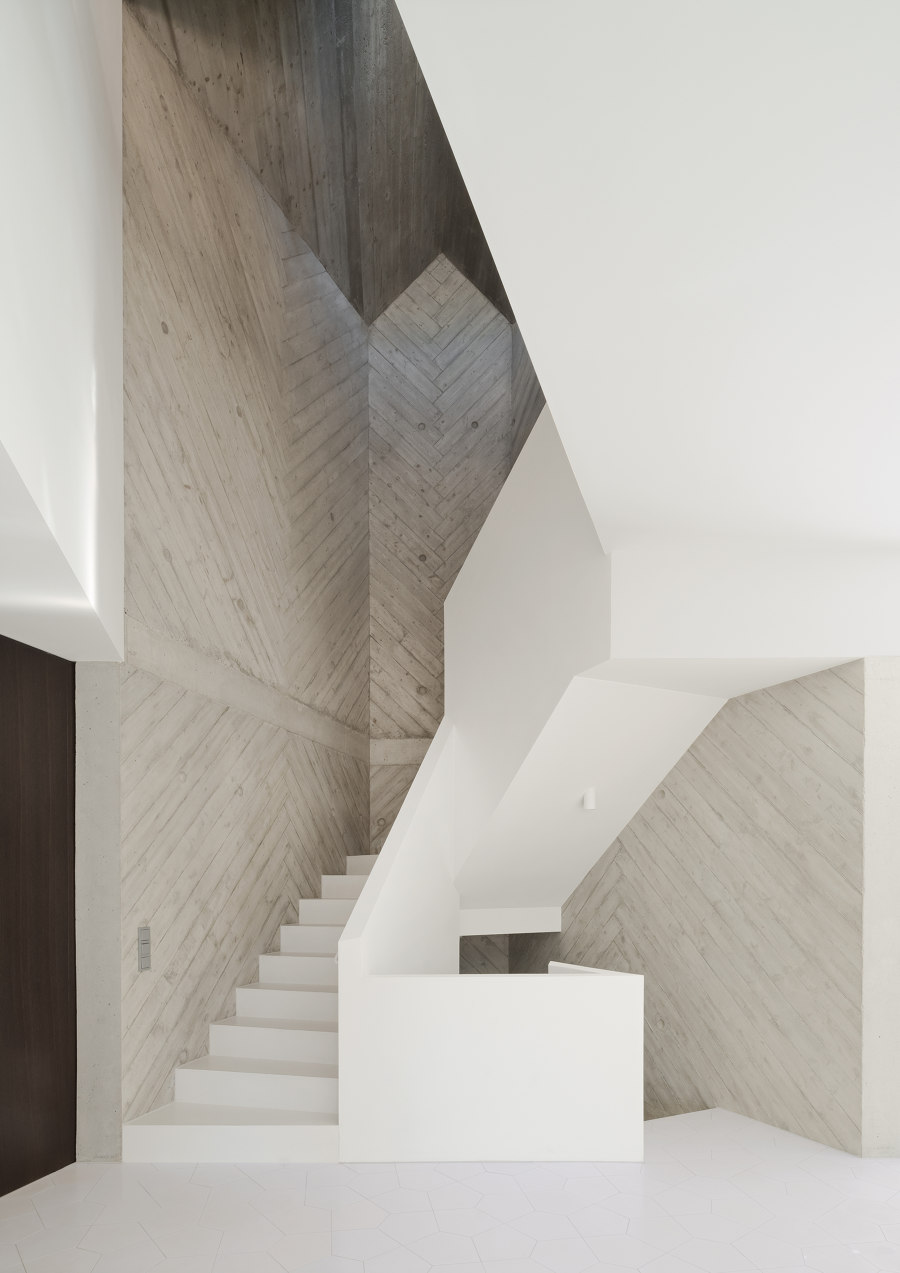
Photographer: Brigida González
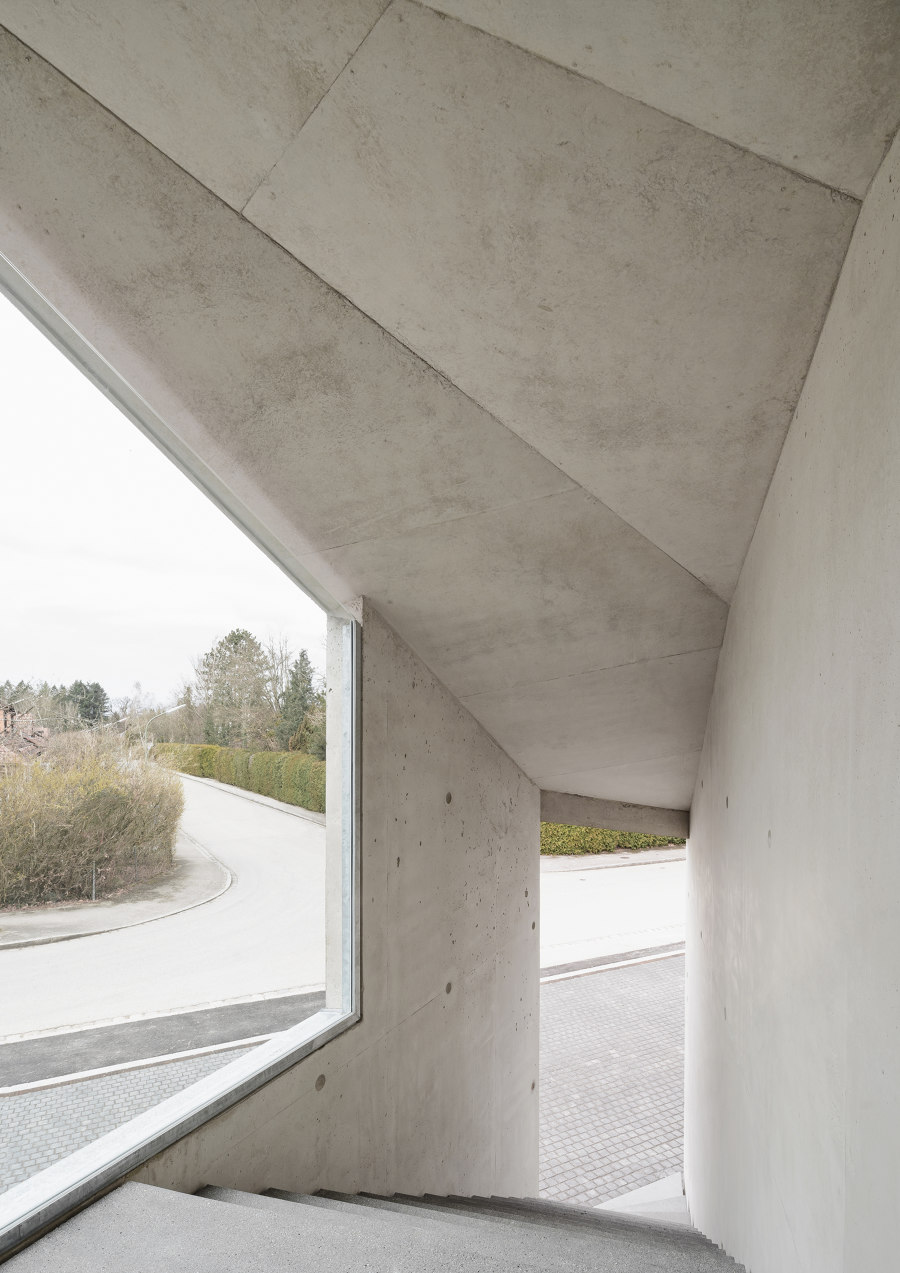
Photographer: Brigida González

Photographer: Brigida González

Photographer: Brigida González
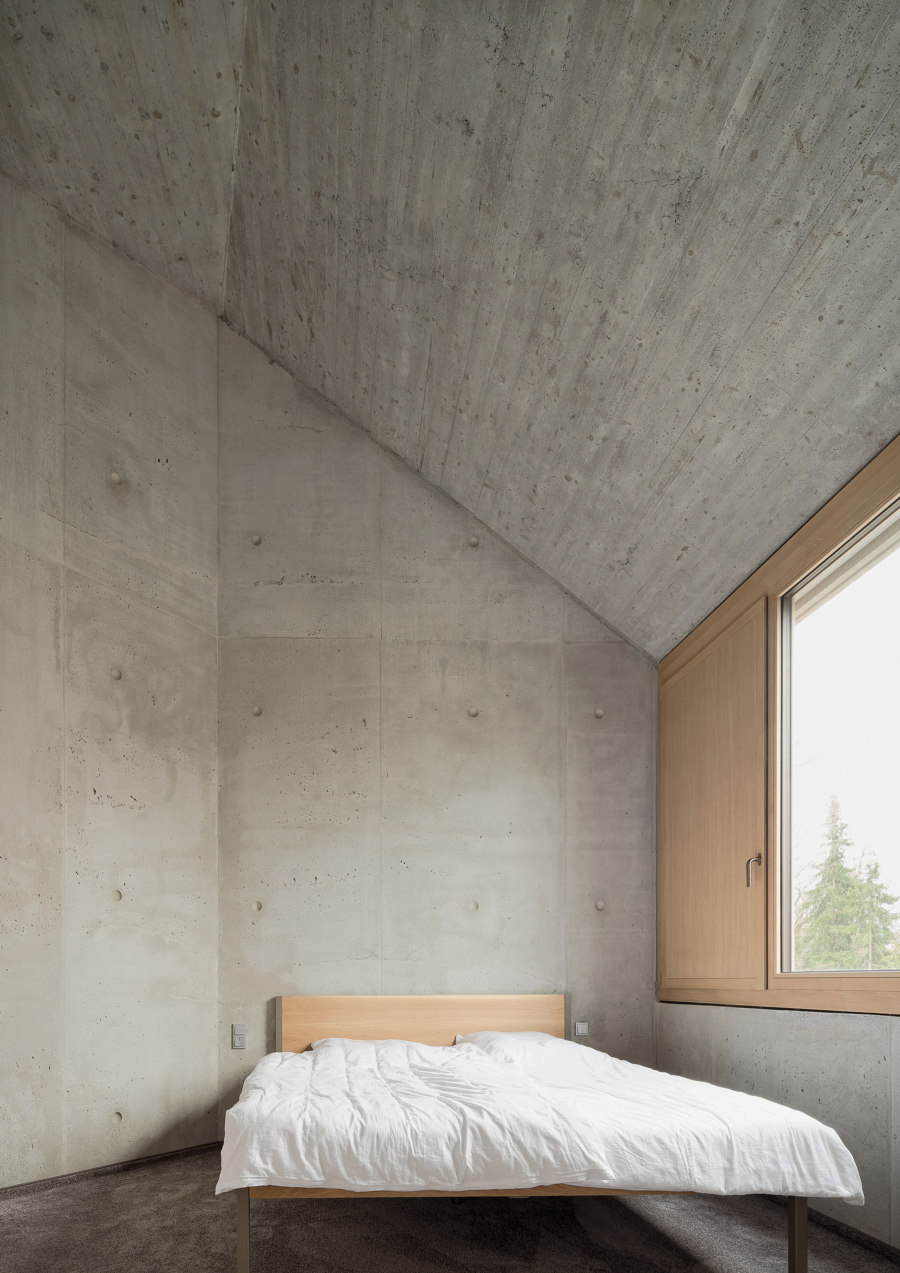
Photographer: Brigida González
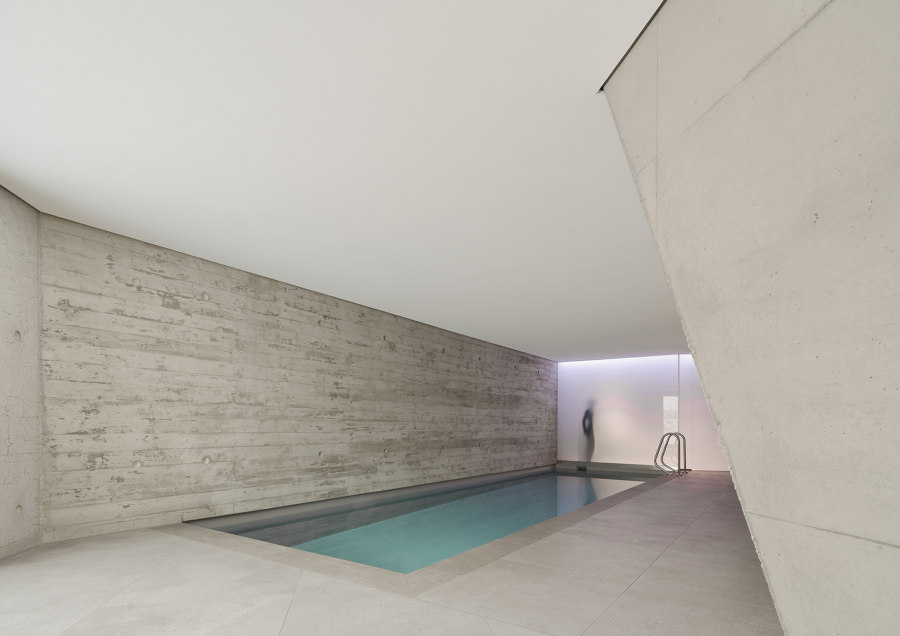
Photographer: Brigida González

Photographer: Brigida González
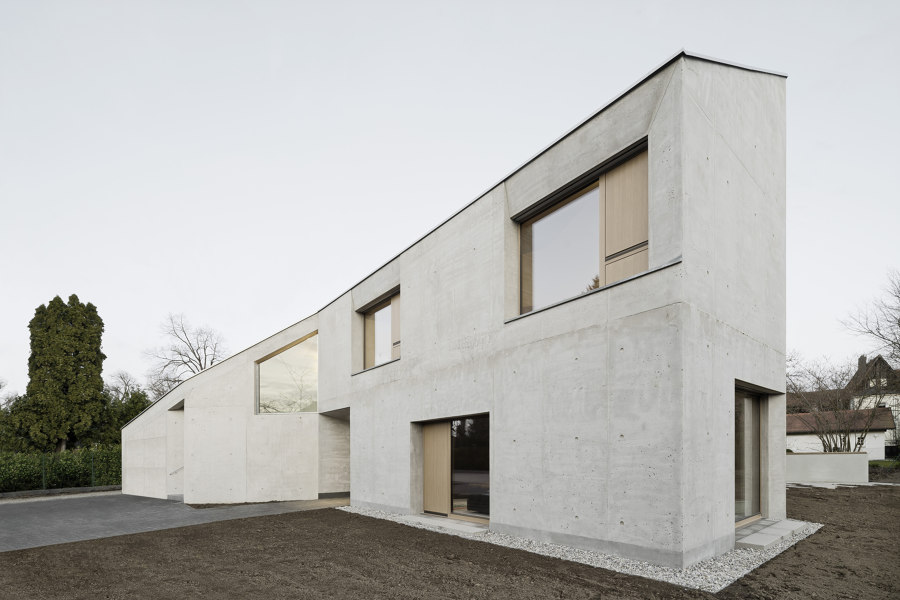
Photographer: Brigida González













